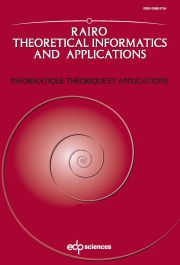Crossref Citations
This article has been cited by the following publications. This list is generated based on data provided by Crossref.
Kim, Jon-Lark
and
Lee, Nari
2017.
Secret sharing schemes based on additive codes over GF(4).
Applicable Algebra in Engineering, Communication and Computing,
Vol. 28,
Issue. 1,
p.
79.
Magaña, Antonio
and
Carreras, Francesc
2018.
Coalition Formation and Stability.
Group Decision and Negotiation,
Vol. 27,
Issue. 3,
p.
467.
Carreras, Francesc
and
Magaña, Antonio
2024.
Stability for Coalition Structures in Terms of the Proportional Partitional Shapley Value.
Homo Oeconomicus,

